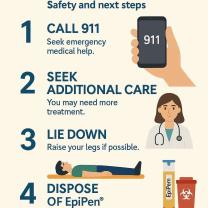How often should seniors exercise each day?
Exercise plays a crucial role in maintaining the health and well-being of seniors. A well-designed exercise routine can help improve strength, flexibility, balance, and overall quality of life. Let's explore the key considerations and components for creating a suitable exercise routine for seniors:
1. Consultation with a Healthcare Professional
Before starting any exercise routine, seniors should consult their healthcare provider. A medical professional can assess their health condition and provide guidance on the types of exercises that are safe and appropriate based on individual needs and any existing medical conditions.
2. Focus on Cardiovascular Health
Include cardiovascular exercises that promote heart health and improve endurance. Examples include brisk walking, swimming, stationary cycling, and low-impact aerobics. Aim for at least 150 minutes of moderate-intensity cardio each week.
3. Strength Training
Incorporate strength training exercises to maintain muscle mass and bone density. Use resistance bands, light weights, or bodyweight exercises such as squats, lunges, and wall push-ups. Focus on all major muscle groups and aim for two days of strength training per week.
4. Flexibility and Balance
Include flexibility and balance exercises to improve mobility and prevent falls. Yoga, tai chi, and gentle stretching routines can enhance flexibility and stability. Practicing balance exercises like standing on one leg can help seniors maintain equilibrium.
5. Warm-Up and Cool-Down
Start each exercise session with a 5-10 minute warm-up to increase blood flow and prepare the body for activity. Similarly, end the session with a 5-10 minute cool-down that includes stretching to promote flexibility and reduce muscle soreness.
6. Gradual Progression
Seniors should start with exercises that match their fitness level and gradually increase intensity and duration over time. Avoid overexertion and listen to the body's cues. The goal is to enjoy the benefits of exercise without risking injury.
7. Social Engagement
Encourage seniors to participate in group exercise classes or activities to promote social interaction and motivation. Exercising with others can make the routine more enjoyable and help seniors stay consistent.
8. Hydration and Nutrition
Staying hydrated is important during exercise. Seniors should drink water before, during, and after physical activity. Additionally, maintaining a balanced diet rich in nutrients supports overall health and energy levels.
Conclusion
A suitable exercise routine for seniors focuses on cardiovascular health, strength training, flexibility, and balance. By consulting a healthcare professional, gradually progressing, and prioritizing safety, seniors can maintain their physical well-being and enjoy an active and fulfilling lifestyle.












